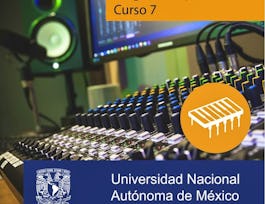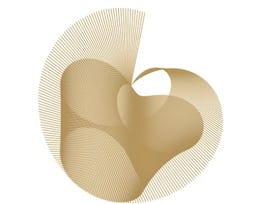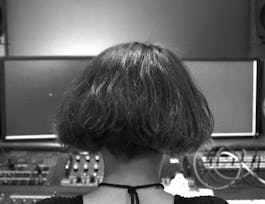Students of this course may try their hand at their own sound interventions and musical compositions, or simply focus on learning more about diverse musical traditions, sonic experimentation, and acoustic phenomena in everyday life. Designed by artist and Duke professor, Pedro Lasch, and UdK composer Mathias Hinke, this course is also co-taught by scholar and musician Jace Clayton (DJ Rupture) and curator Candice Hopkins (Documenta 14). The lectures link major artistic developments of recent decades to wider ideas about sound in specific social and spatial contexts.



Art of the MOOC: Experiments with Sound



Instructors: Pedro Lasch
Sponsored by InternMart, Inc
8,244 already enrolled
(72 reviews)
Skills you'll gain
- Social Sciences
- Research Methodologies
- Active Listening
- Communication
- Communication Strategies
- Multimedia
- Media and Communications
- Content Management
- Interpersonal Communications
- Scientific Methods
- Electronic Media
- Research Design
- Research
- Culture
- Content Development and Management
- Digital Content
- Cultural Diversity
- Experimentation
- Media Production
- General Science and Research
Details to know

Add to your LinkedIn profile
8 assignments
See how employees at top companies are mastering in-demand skills


Earn a career certificate
Add this credential to your LinkedIn profile, resume, or CV
Share it on social media and in your performance review

There are 8 modules in this course
This module introduces the four co-teachers of the course (Lasch, Clayton, Hinke, Hopkins), along with five analytical concepts that we will use throughout its sections and projects: Frequency, Perspective, Material Frame, Time Frame, and Concurrency. These concepts are designed to encompass a wide range of acoustic phenomena within spatial and social experience.
What's included
2 videos2 readings1 assignment
This lesson expands on specific terms or ‘sound elements’ that include tuning, resonance, silence, improvisation, rhythm, synchronization, duration, and timbre. It also addresses traditional tools in sound production, from musical instruments to sampling, auto-tunes, and other more recent technologies. The module concludes by exploring the role of sound in specific non-musical social settings and practices, such as clapping, fan culture, sports, traffic jams, mass demonstrations, and more.
What's included
10 videos1 assignment
The practical component of this section is optional, asking learners to choose a space with specific ‘sound rules’ and change or alter these rules through actual experimentation.
What's included
1 video1 reading1 assignment
This lesson begins by focusing on the relationship between experimental practices and scores or notation systems. It also examines how sound has been used and understood by artists in specific urban contexts, such as ports, train stations, and airports, as well as rural settings, including forests, gardens, and the wider landscape. We conclude with an examination of how sound and music travel, be it through the populations who produce it, or the objects and digital files that are used to record and share it.
What's included
8 videos1 assignment
The practical component is optional, inviting learners to ‘erase a sound in space’ through a range of possible strategies.
What's included
1 video1 reading1 assignment
This lesson provides an overview of the methods and ideas from different schools of listening. It also presents a critical examination of the term ‘world music’ and how it has evolved in relation to economic and cultural globalization. With this global perspective in mind, the concluding portions of our lectures are dedicated to acoustic experience and musical experimentation on the net, the radio, cellular networks, and various social media, including all of the glitches, accidents, and failures we associate with these platforms.
What's included
8 videos1 assignment
The practical component of this module is optional, asking learners to produce their own experiment with media and technical failure.
What's included
1 video1 reading1 assignment
This module is optional and only for those who wish to put what they learned from the course into one final project that is more open and ambitious in scale. Two options are given for this, one being your most ambitious project, and the other based on the creation and use of your own musical instruments.
What's included
1 video1 reading1 assignment
Instructors



Why people choose Coursera for their career




Learner reviews
72 reviews
- 5 stars
83.33%
- 4 stars
12.50%
- 3 stars
2.77%
- 2 stars
1.38%
- 1 star
0%
Showing 3 of 72
Reviewed on Aug 26, 2019
This has been the best course so far that I have came across online.
Reviewed on Nov 6, 2018
This is a very good course, the best in the Art of the MOOC series.
Reviewed on Jun 9, 2018
Super interesting - lots of info that was new to me.
Recommended if you're interested in Arts and Humanities

Universidad Nacional Autónoma de México

Korea Advanced Institute of Science and Technology(KAIST)

University of London

Berklee

Open new doors with Coursera Plus
Unlimited access to 10,000+ world-class courses, hands-on projects, and job-ready certificate programs - all included in your subscription
Advance your career with an online degree
Earn a degree from world-class universities - 100% online
Join over 3,400 global companies that choose Coursera for Business
Upskill your employees to excel in the digital economy





